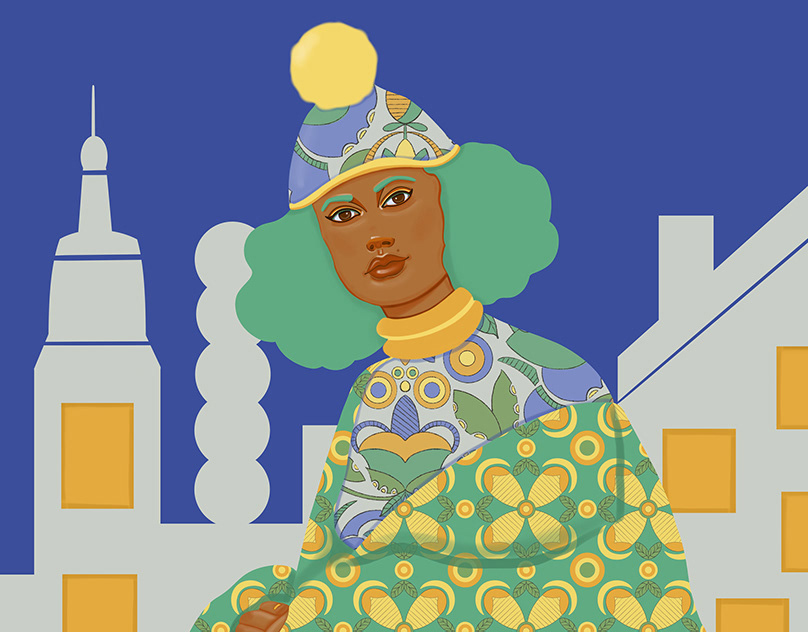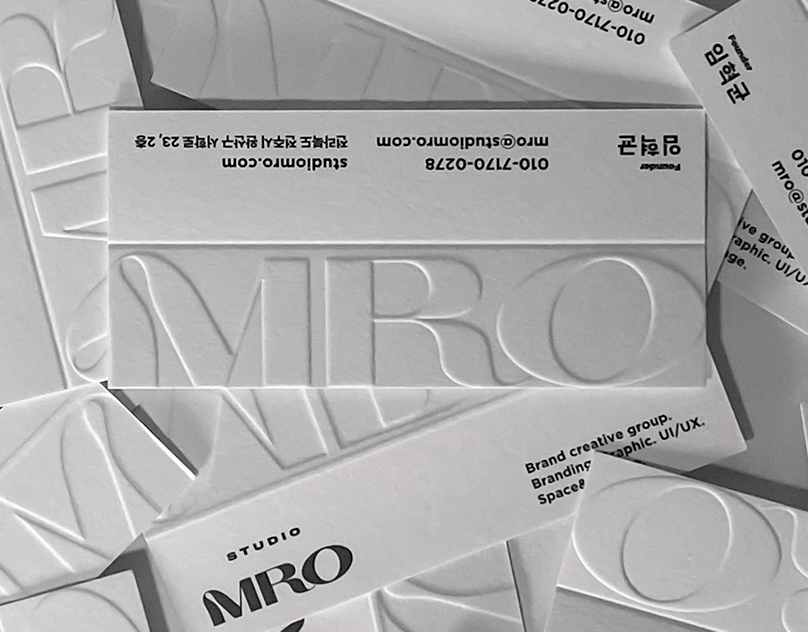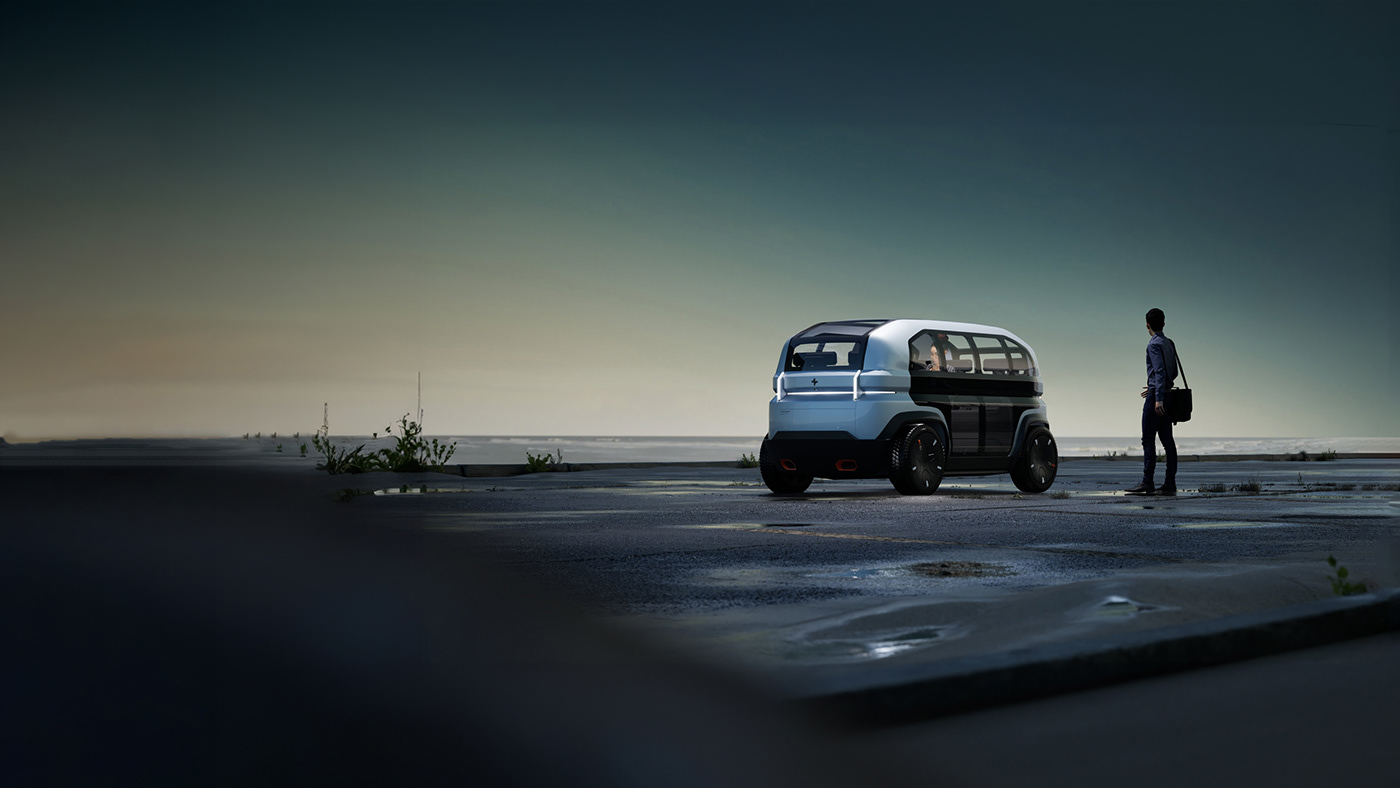
CROSSER V1: Amphibious Autonomous Mobility for Coastal Cities
The CROSSER vehicle and service aims to create a diversified means of transportation for coastal cities. Its implementation would relieve the existing saturation of land vehicles and the need to choose more time-consuming routes to reach a place to reach a location blocked by waterways. It presents itself as an on-demand service that transports passengers in a Door-to-Door according to their instructions via a digital app for mobile devices.
The reuse of waterways through the use of this amphibious vehicle could increase the speed and flexibility of urban transport in these locations, reduce the noise pollution felt by the inhabitants of these cities and offer a customized service that meets all the needs of each user.
PART I: Investigation
Since around 71% of the Earth's surface is covered in water, and the oceans contain around 96.5% of all the Earth's water, the interaction between population and water worldwide was inevitable. Migration to coastal areas occurred throughout history so that the population could benefit from the advantages including food supply, transportation, a defensible position and a healthy environment. Worldwide, the population living in coastal areas has been increasing exponentially both in coastal areas that are within a radius of 100km from the coast.
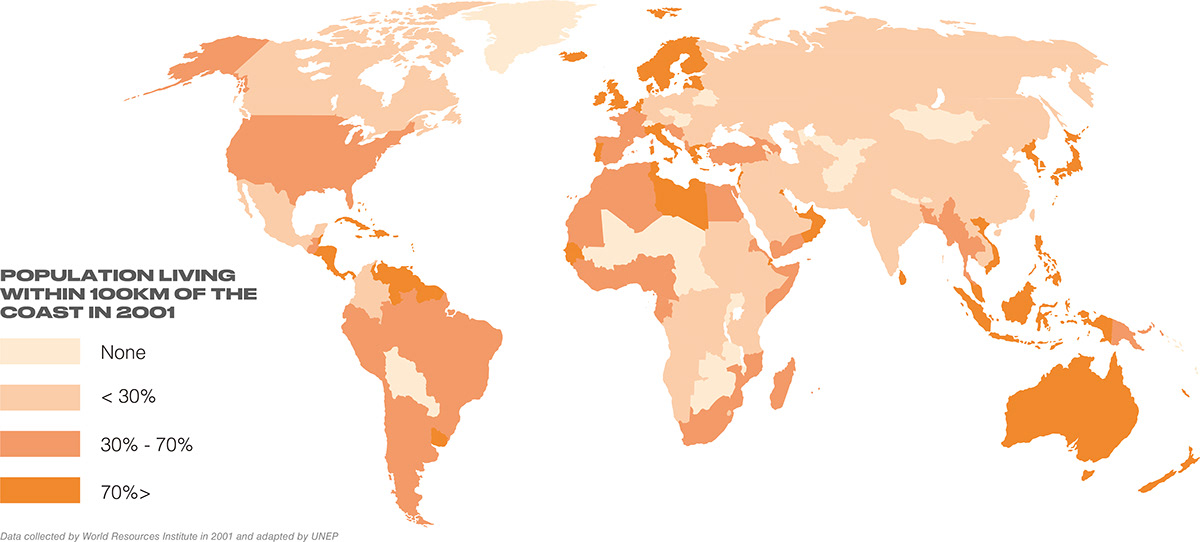
SEA LEVEL RISE
The change in mean sea level is one of the factors that best demonstrates the changes in our climate, since it reflects both the thermal expansion of the oceans in response to their warming and the increase in ocean mass due to the melting of ice sheets, polar ice caps and glaciers.
In Europe, by 2100, around 70% of the population will live in the 100-year coastal floodplain. Currently, the expected annual damage caused by flooding in European countries amounts to 1.25 billion euros and could 960 billion by the end of the century. A rise in sea of 3 meters would quadruple the annual damage forecast for European countries
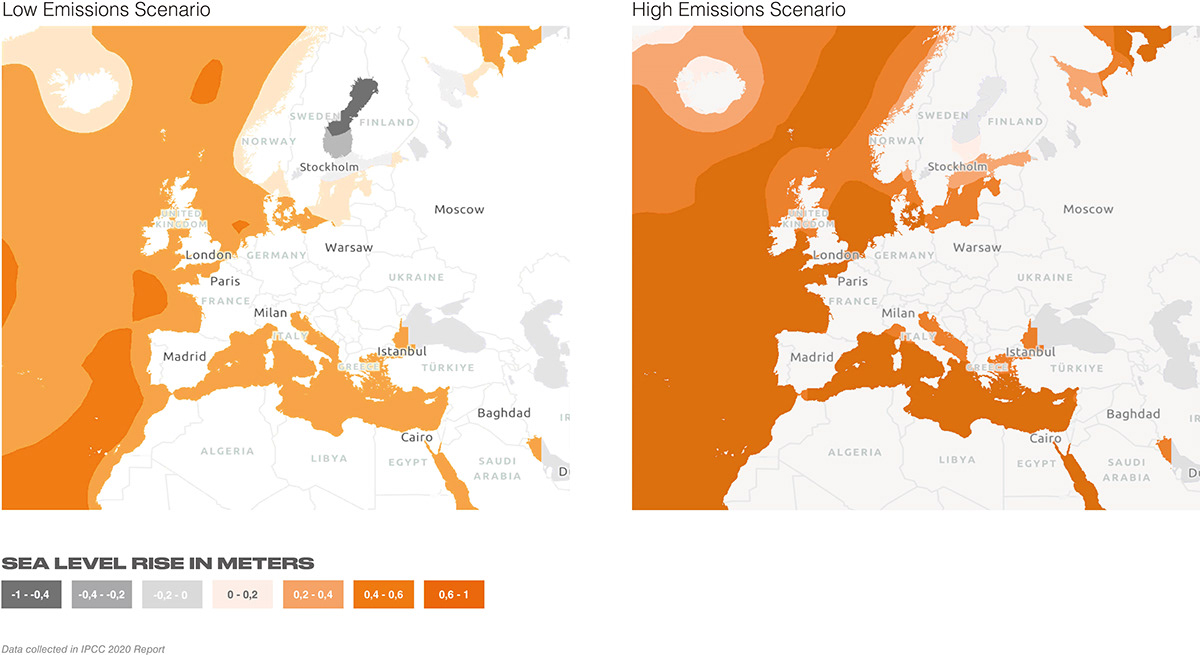
ROAD CONGESTION & NEW MOBILITY ERA
Congestion is another of the main problems in the mobility of large urban areas, specifically coastal cities. It arises due to the negative effects of population growth, which is the driving force behind the development of cities. Congestion is an important consequence of transport, given its direct influence on the travel times of road users and the subsequent impact on accessibility to the destination in a given period.
Consequently, in densely populated areas, the demand for mobility may increase, bearing in mind that Eurostat's latest demographic projections indicate that the EU's population will increase until 2026, when it will reach a maximum of 453.3 million inhabitants. This situation will put considerable considerable pressure on already overburdened mobility systems, diminishing the interest in owning a private vehicle.
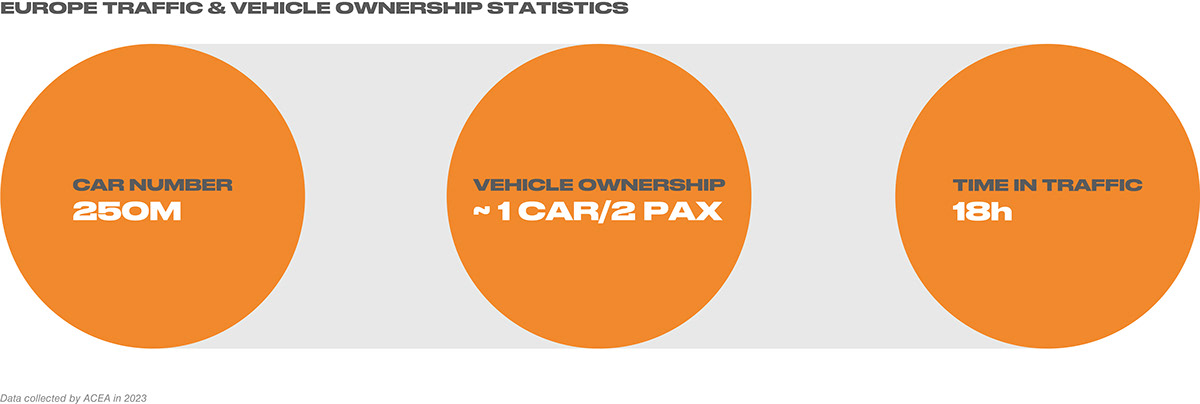
The mobility of the future is beginning to chart its course in a diversified way where getting from point A to point B is neither the only nor the main factor to be taken into account when developing mobility systems, but rather the combination of travel the user's travel intention, interaction, habits and lifestyle. These factors will be applied in conjunction with more sustainable practices and technologies, such as transition to 100% electric vehicles, and that interconnect between mobility systems to offer more specific services to users.
Urbanization and the creation of megacities have led to a concentration of population that saturates the existing infrastructures with with their private vehicles, leaving little room for further growth of other mobility systems. In the future, it will be necessary to rethink how vehicles occupy this space, even if it requires a redesign of infrastructure. infrastructure. Shared mobility, short-distance air mobility and waterborne mobility will be opportunities to explore in a future market.

WATERWAYS FOR PASSENGER MOBILITY
Inland waterway transport is an important aspect of the European network freight transport network, covering more than 37,000 kilometers of waterways and and linking numerous urban centers and industrial regions. The European Commission strives to promote and strengthen the competitive position of inland waterways in the positioning of inland waterways in the transport sector, while facilitating their integration into the intermodal logistics chain. Inland waterway transport is recognized for its reliability, energy efficiency and exploitation potential, thus constituting a competitive substitute for road and rail transport. It is an environmentally friendly alternative in terms of energy use and noise pollution. noise pollution, helping to decongest overloaded road networks in densely populated regions.
PART II: Product Development
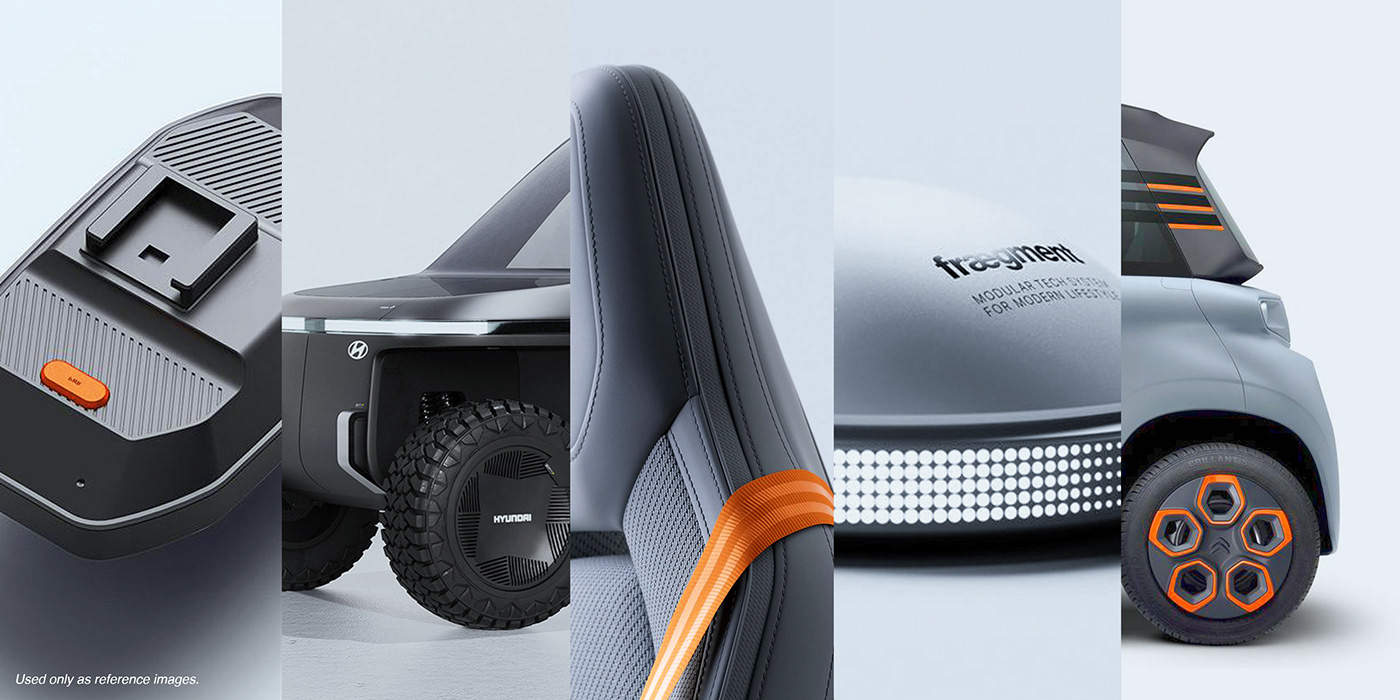
For the development phase, was presented multiple concepts of services with the same core idea, amphibious vehicles, to cover as many hypotheses as possible. From the outset, a moodboard was established that would then serve as a guideline for the visual representation of each idea.

CONCEPT_1: Fixed-Route Urban Transport Service
This concept is defined by a service where passengers are transported from point A to point B by an amphibious vehicle that travels a fixed route not defined by the user. This route may contain several stops along the land routes. In this concept, it is necessary to set up stations for the vehicles to stop and wait for passengers.
CONCEPT_2: Sharing On-Demand Urban Transportation Service
This concept is defined by a service where passengers are transported from a point A to a point B through their own requirement and with the specific route chosen by you. However, other passengers wishing to travel to a point C with the same route as A-B, can request the vehicle's service and share the journey with the users who would already be there. This concept requires real time monitoring of the route of all vehicles as well as the an application for users.
CONCEPT_3: On-Demand Private Urban Transportation Service
This concept is defined by a service where passengers are transported from a point A to a point B through their own requirement and with the specific route chosen by you. Although it doesn't sacrifice passenger privacy, it only allows you to a reduced number of passengers on each journey compared to previous concepts.
CONCEPT_4: Modular On-Demand Private Urban Transportation Service
This concept is defined by a service where passengers are transported from a point A to a point B through their own requirement and with the specific route chosen by you. Unlike concept 3, it adapts to the number of passengers through its modularity, and a section can be added between the two between the two ends, which allows for a greater number of seats depending on the user's request made by users. This proposal is the result of combining concepts 2 and 3. This concept requires real-time control of the route of vehicles and the provision of an application for users.
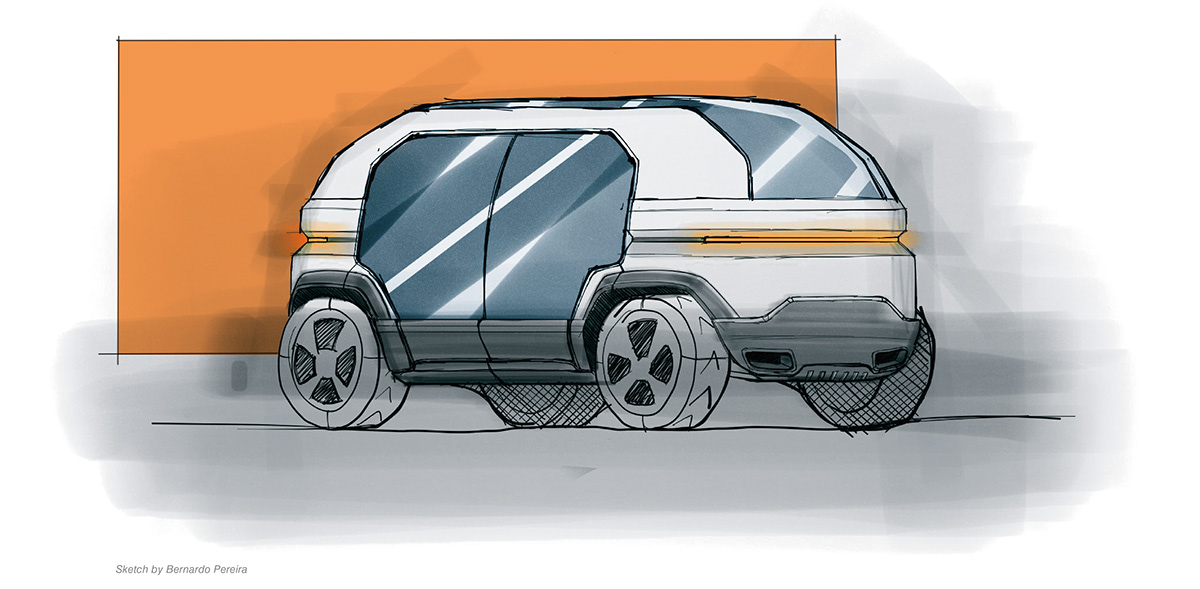
PART III: Service Development
The service developed consists of two distinct parts. The customer-related part, which focuses on interaction with the customer and the journey to be made. The other part is related to the shopkeeper behind the whole operation, such as loading the vehicles, maintaining them and communicating the network that connects all the vehicles to the company's servers.
USER SERVICE MAP
The Crosser mobile application allows users to request transportation services and make digital payments through their chosen account. Users can confirm the pickup and delivery location using a digital map display. The app checks for nearby available vehicles and sends a Crosser to the user with the provided instructions. The vehicle then takes the fastest route, either by land or water, based on the user's data. Upon reaching the user, they must confirm their identity by placing their mobile device near the NFC display. Once confirmed, the doors open and the user can enter. Luggage can be placed in designated racks. After fastening seat belts, the vehicle takes the fastest route to the desired destination. Users can track their location in real time on an interior screen, adjusting lights and music using the app.

COMPANY SERVICE MAP
A company stores all its vehicles in a base building, charging them if the battery is not at 100% when out of service. They can also be serviced for mechanical or digital issues. The vehicles are interconnected through a main server in another location, and requests are processed based on vehicle availability and user requirements. Requests are transmitted digitally to the most suitable vehicle, along with information on the route, possible delays, access ramps to water, and personalized user information. The journey follows the sent information but can be adapted in real-time for cancellations or unforeseen events. If the vehicle travels by water, it locates the closest access ramps, but will take a quicker and safer land route if available. Upon arrival at the chosen location, the vehicle waits for the user to confirm using NFC technology on the door's exterior.
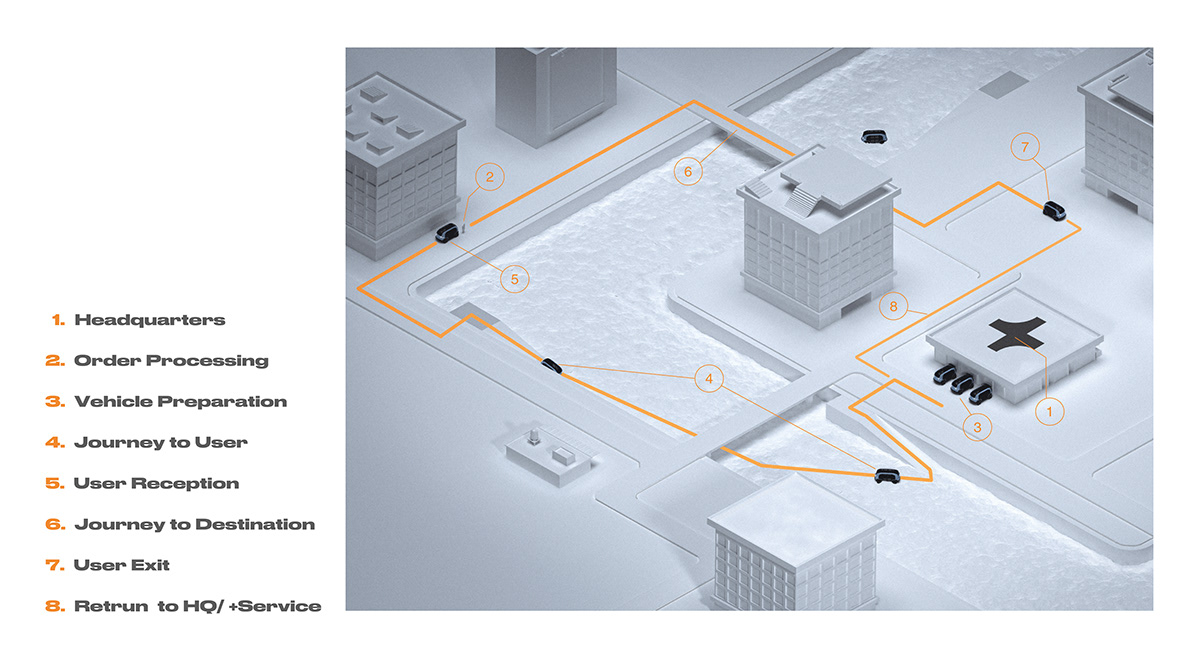
PART IV: Materialisation and Visualisation
More options, more comfort, less time.
CROSSER is a new transportation service that aims to provide a diverse option for coastal cities. It uses amphibious vehicles to navigate waterways, offering faster and more customizable transport, reducing noise pollution, time in road traffic, and providing on-demand door-to-door service through a mobile app.
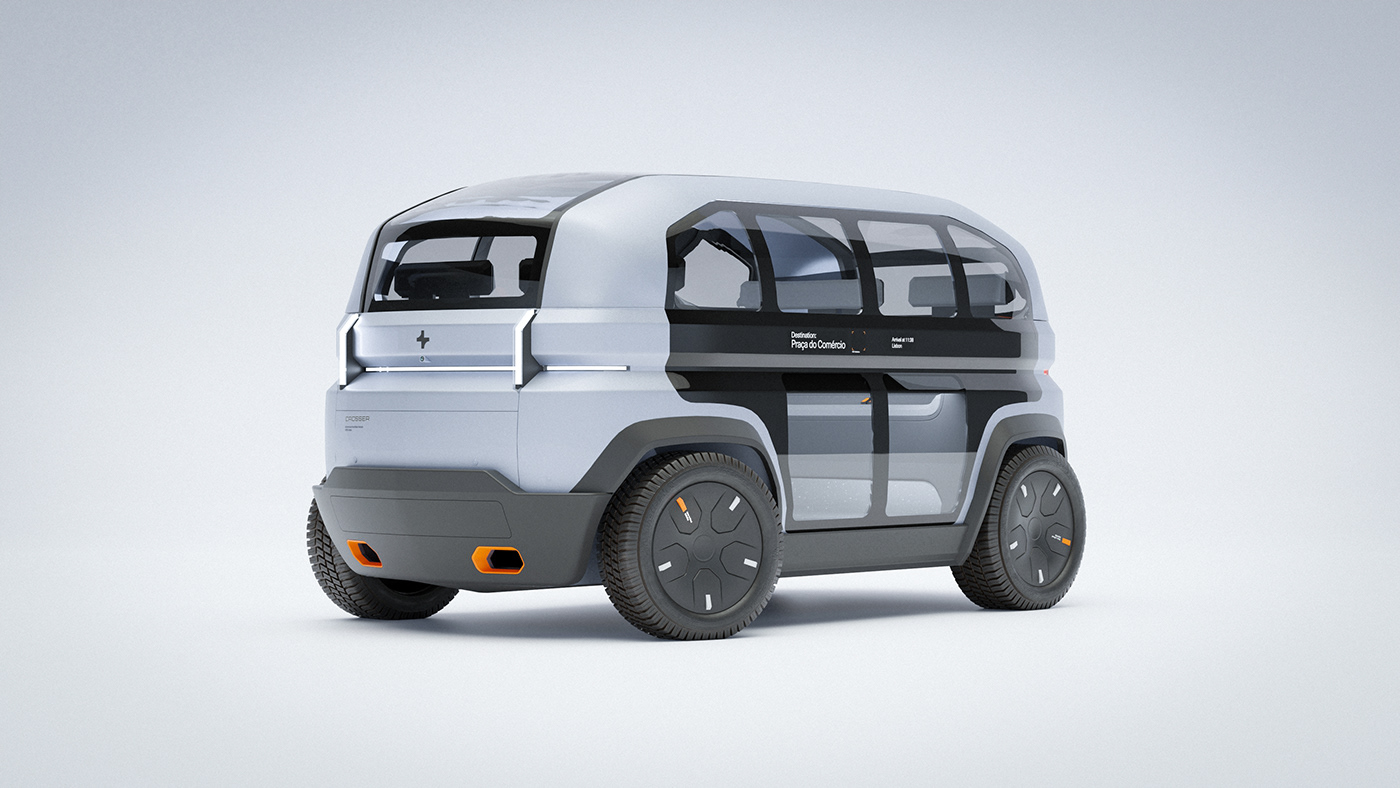



Different versions for different services
The Crosser vehicle has been developed to be adaptable to services other than simple passenger transportation. Its modularity in production makes it possible to add seats in its longest mode, and its interiors can be altered according to the needs of the service to be developed.
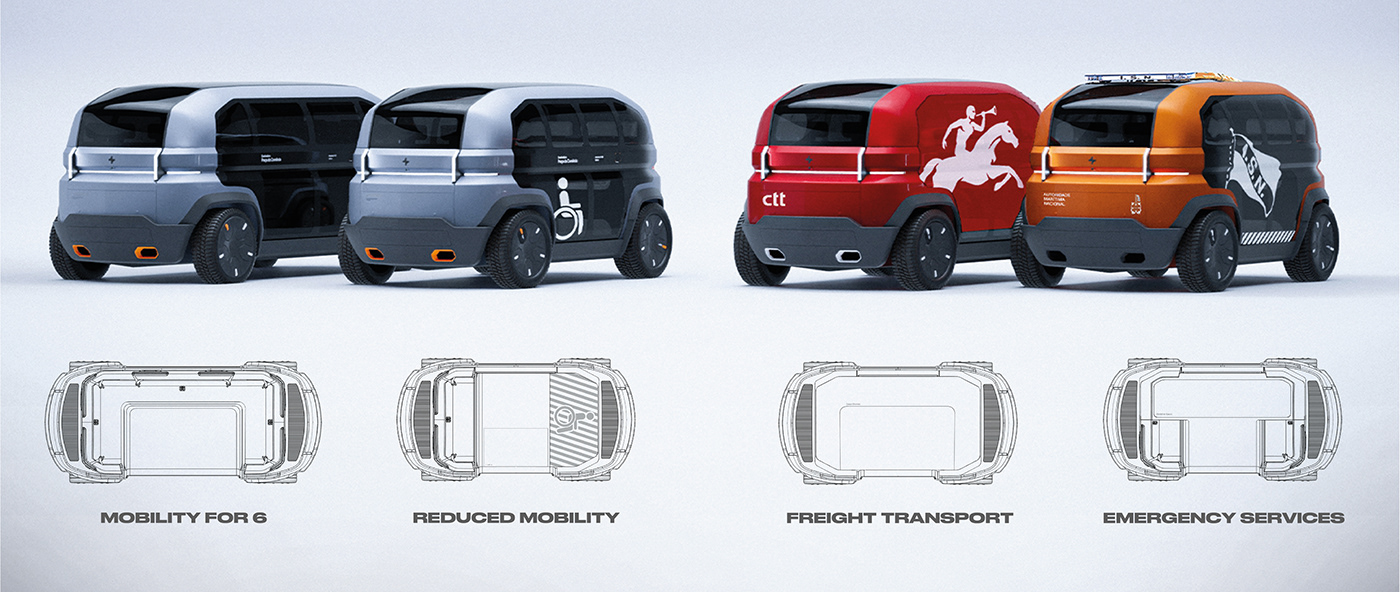
Interior
The interior of the vehicle can accommodate up to 4 people and features a screen with route information, weather, and user warnings. Passengers can connect their mobile devices to control lighting, music, and screen display. Seats have weight sensors and adjustable head rests, and the panoramic view offers a pleasant travel experience. It's modular flexibility enables changes in production phase for specific services.



PART V: Outsource technology and funcionalities
Wheel Rotation Supension
The CROSSER utilizes a suspension system developed by Gibbs Aquada that allows the wheels to be raised to a maximum angle of 90º upon entering the water. This suspension is activated by sensors on the outside of the vehicle, which send a signal to the on-board computer to activate the lift. The lift is completed in a matter of seconds and does not require the vehicle to come to a stop. Once the vehicle enters the water, the system is automatically activated, and the vehicle is ready to travel. If the LIDAR and RADAR sensors detect an obstacle, such as an access ramp marked on the GPS, the system is activated to lower the wheels again.


Digital Vision + LIDAR & RADAR System and Sensors
The use of LIDAR and RADAR sensors enables the creation of a comprehensive digital image of obstacles surrounding a vehicle, ensuring fully autonomous driving capabilities both on land and in water. This advanced system detects obstacles in traffic and also identifies objects in water, improving safety. The vehicle is equipped with four points at each end and two on each side to achieve 360º detection, minimizing blind spots. If the vehicle approaches too closely to an object, it automatically applies the brakes and sends an alert message to both the passenger and the base server. In addition to the sensor-generated digital image.
A video image is recorded simultaneously to constantly track the vehicle's visual location. The vehicle features two cameras at each end with a 150º viewing angle. Moreover, the digital image from the sensors can be supplemented, and in emergency situations, a remote driver can remotely view the vehicle and record any incidents of vandalism or violence. These recorded images can be shared with relevant authorities and security entities.


Internal Components + Charging
In addition to the different suspension system, the vehicle has other components such as in-wheel motors on all four wheels, an electronic vehicle control system, hydrojet systems for propulsion in water, blade battery packs and a direct connection to the company's server.
Vehicles are charged at the base of operations in the city where they are active. Charging can only be carried out at the charging devices inside the base. Charging is done by inserting the gun in the appropriate place marked on the charging cover, as shown in the image.


Lighting
The lighting is based on LED strips and comes in 2 different colours: neutral and orange. Each of the tones is linked to a function: neutral for normal night-time lighting, orange for brake lights and a mix of both for flashing warnings, as seen on the images.


Additional Enviroment Visualizations
For a better perception of the vehicle in a real environment, different renders were made in which the movement in water and on land can be observed.
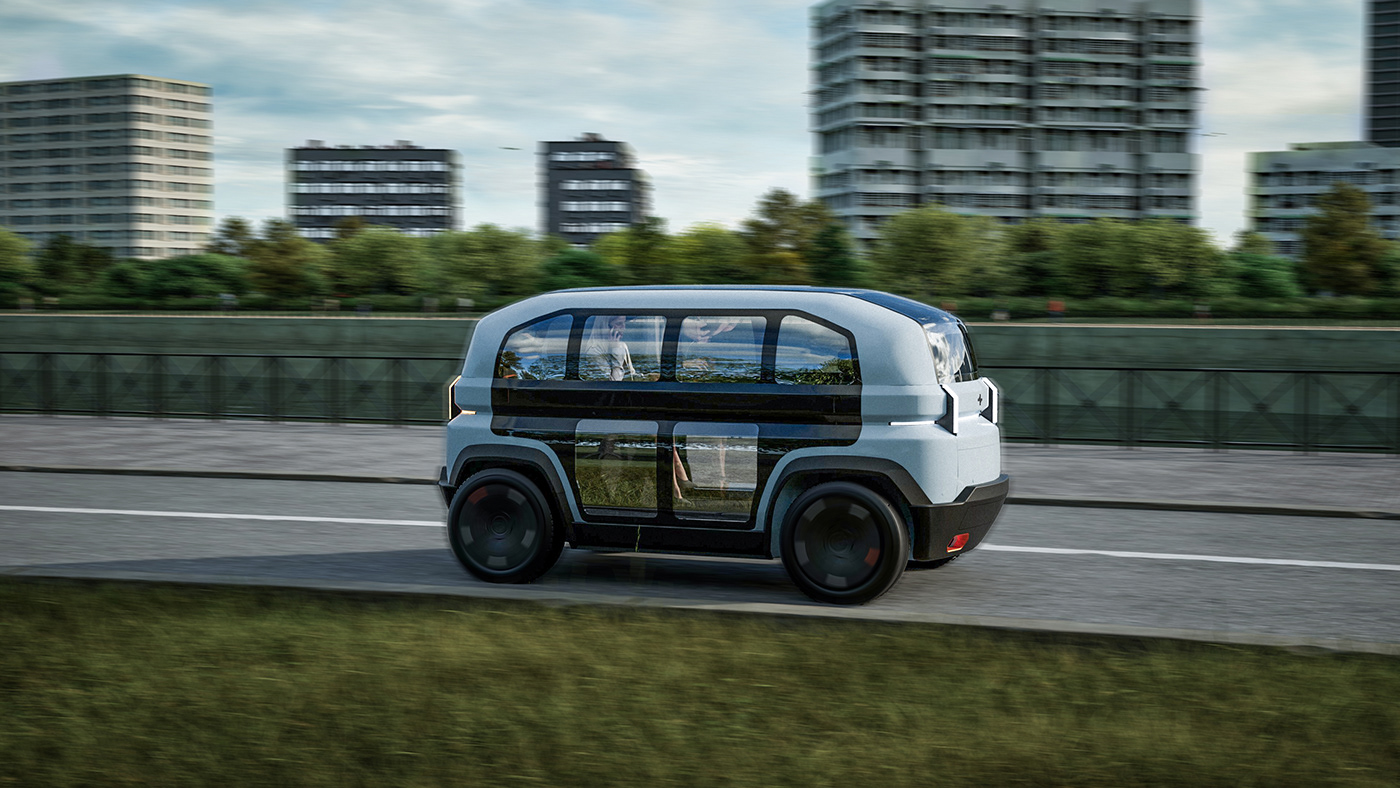


PART VI: Mockup model and Presentation
The model was built using 3D printing technology. Printing was divided according to the structure of the part to be printed, with more complex parts opting for SLA printing and less complex parts opting for FDM printing. The parts were then finished and unified to form the respective model.
The final presentation was held at university and it was composed of two informative posters, one project book, one technical drawings book and the respective mockup model.

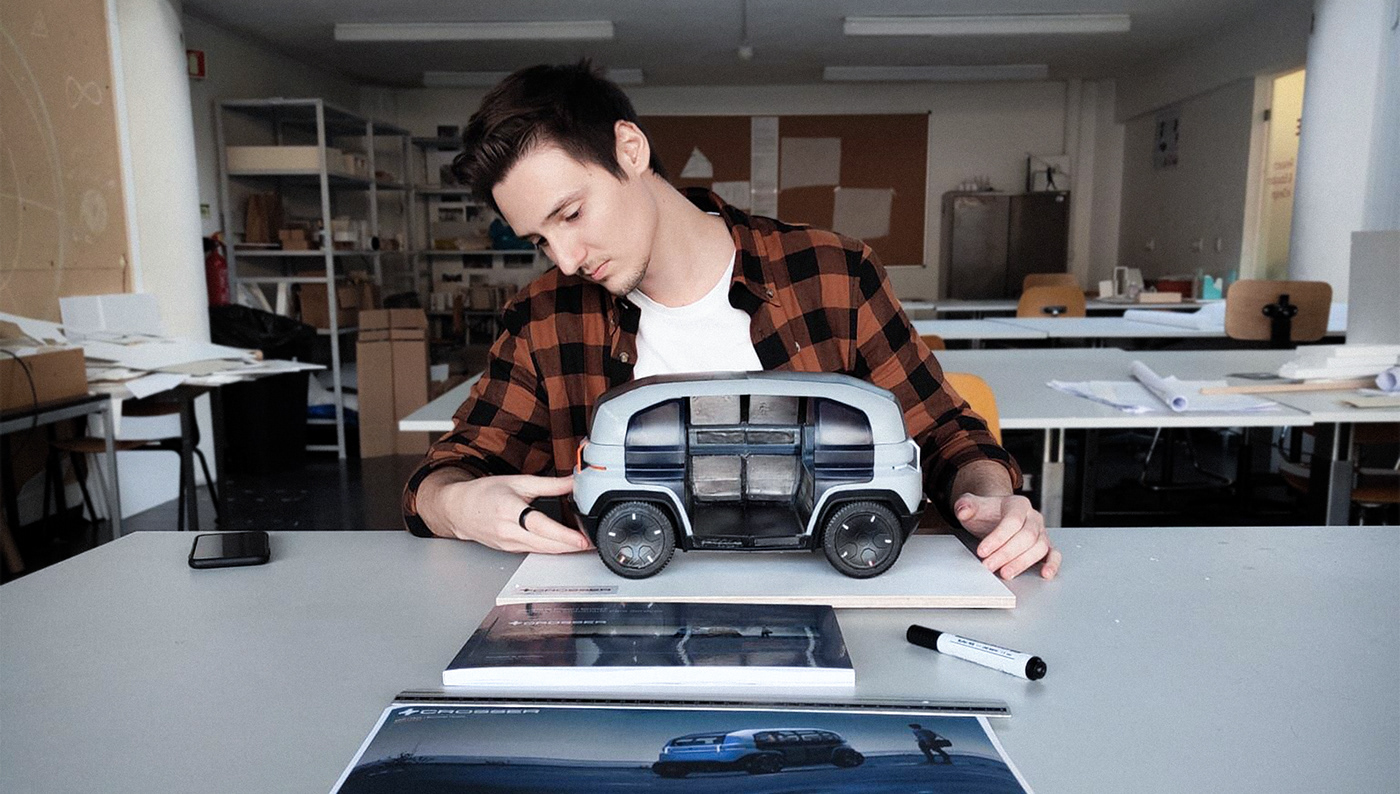
Designed by Bernardo Pereira
Faculdade de Arquitetura U.Lisboa - 2023


